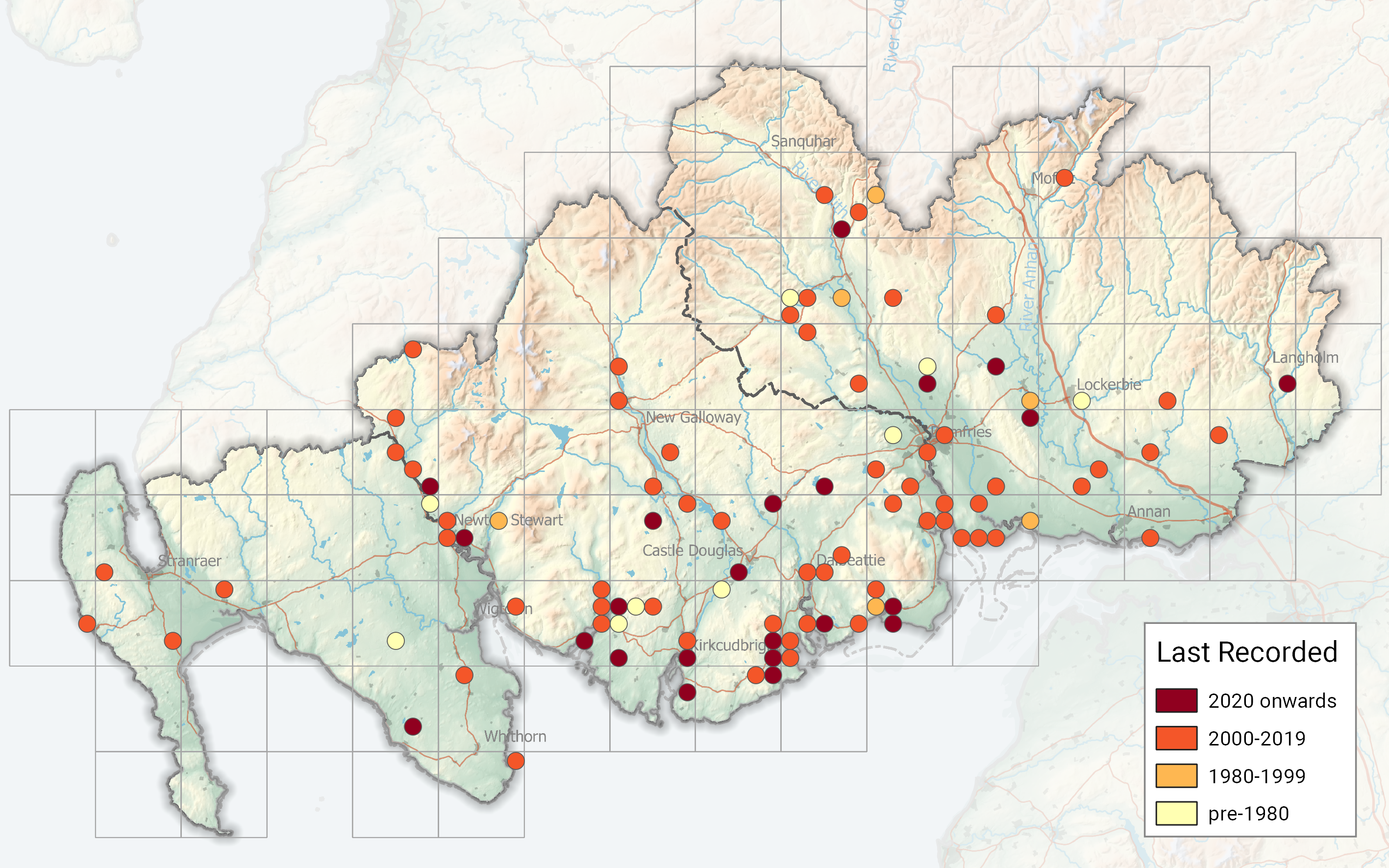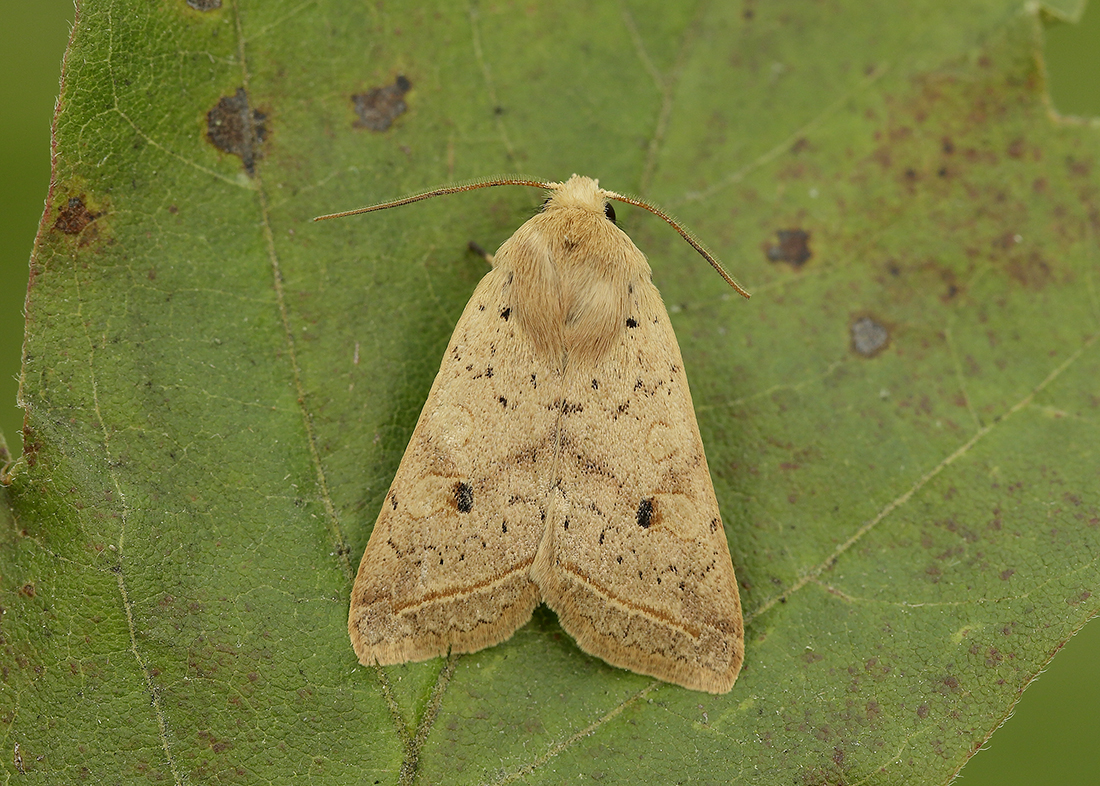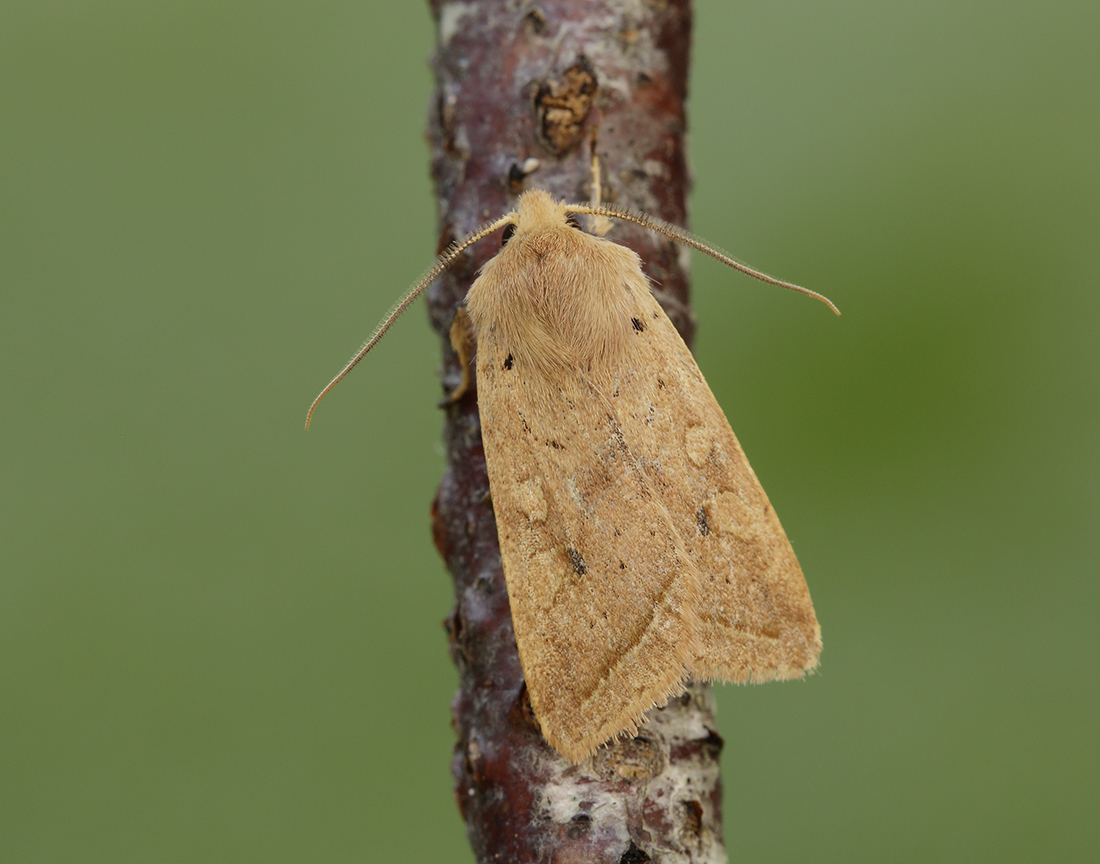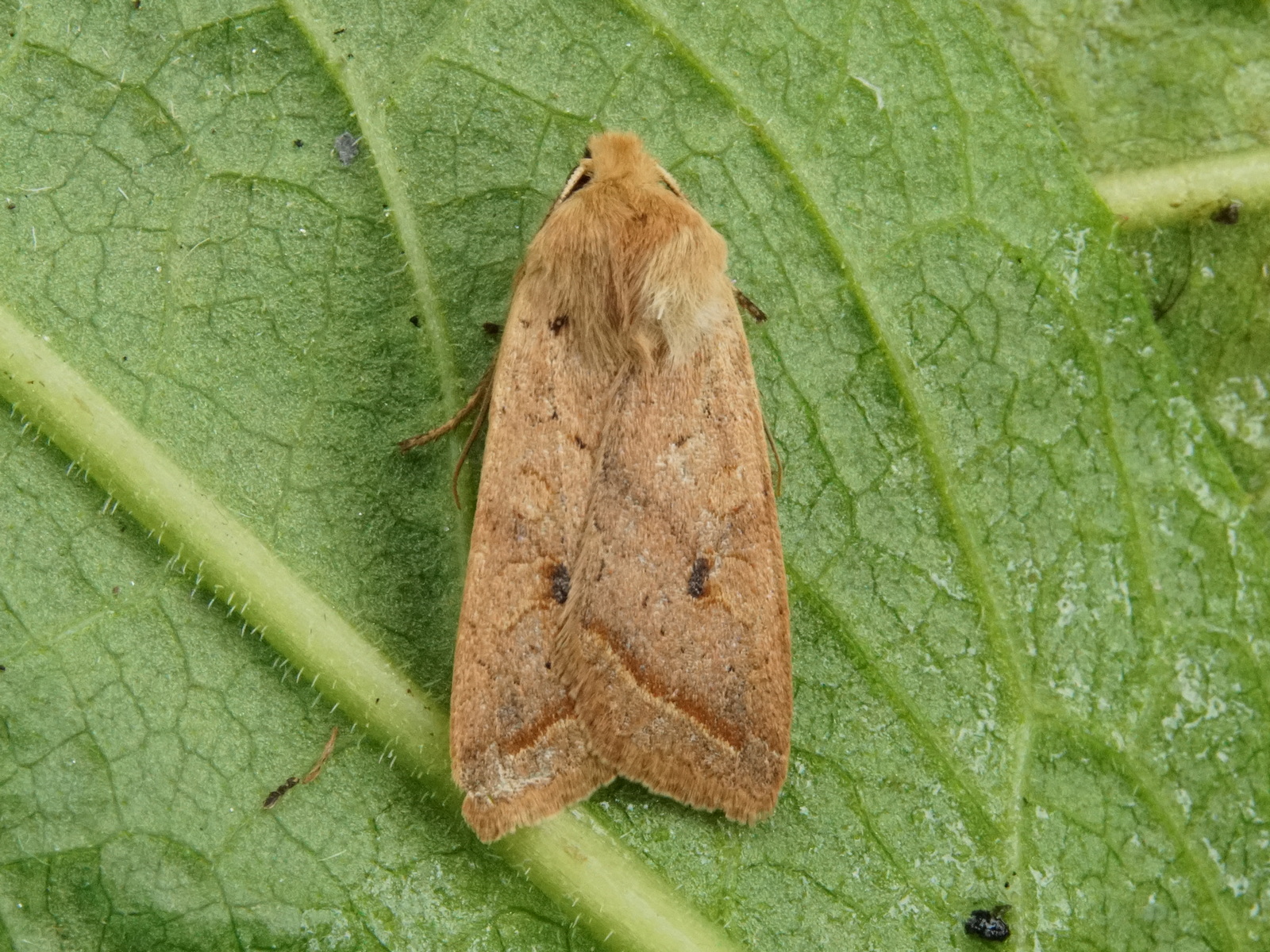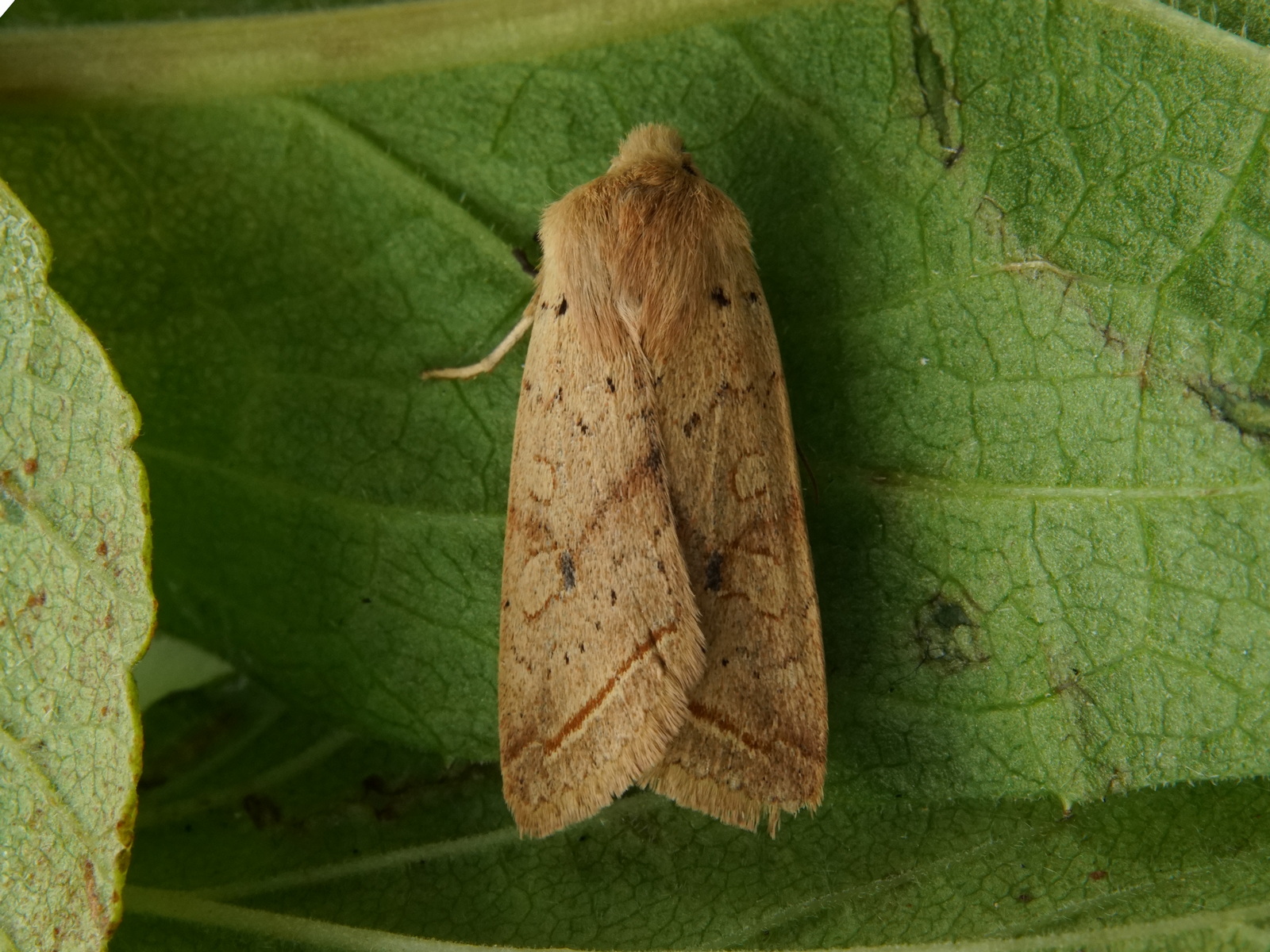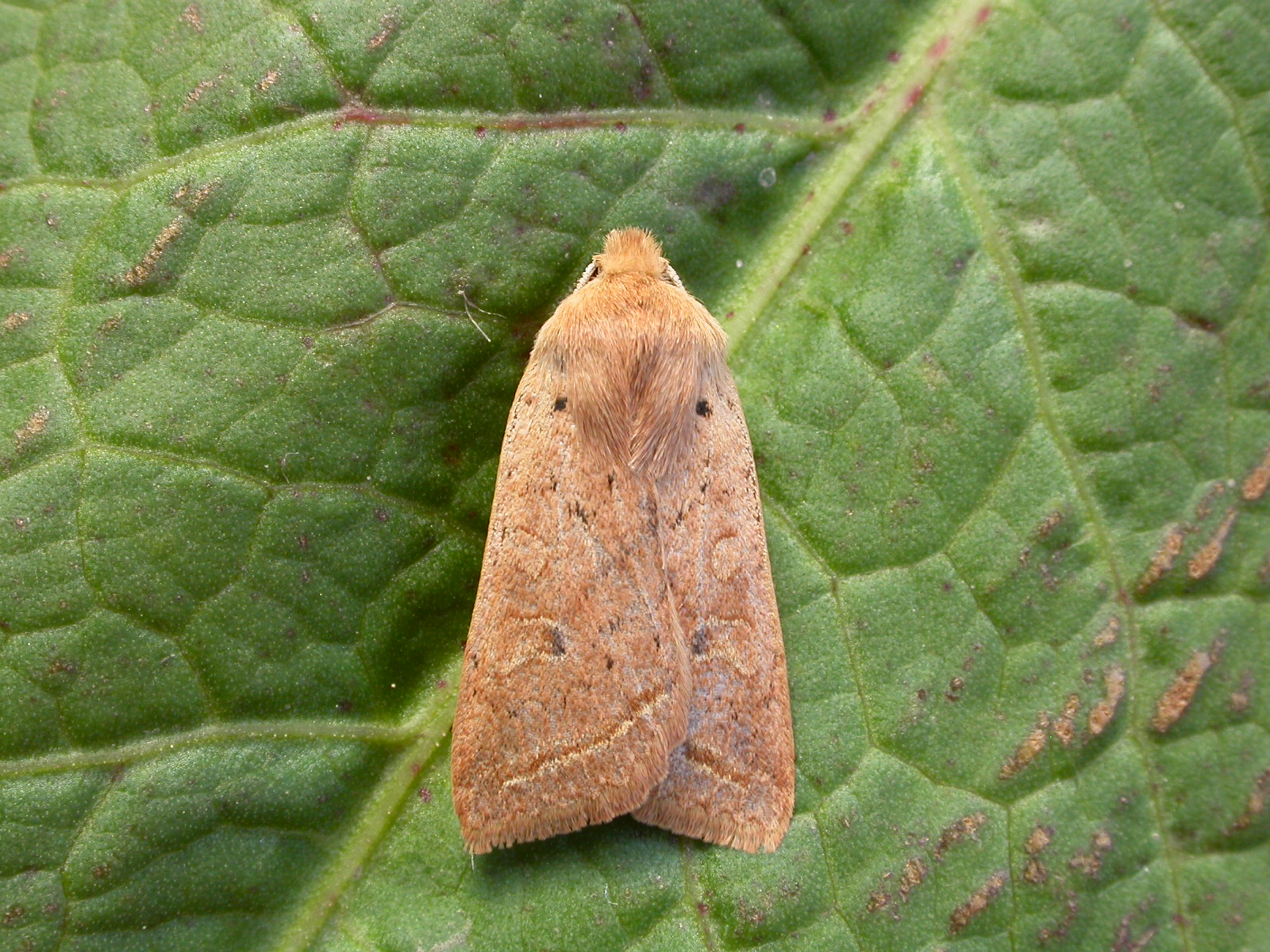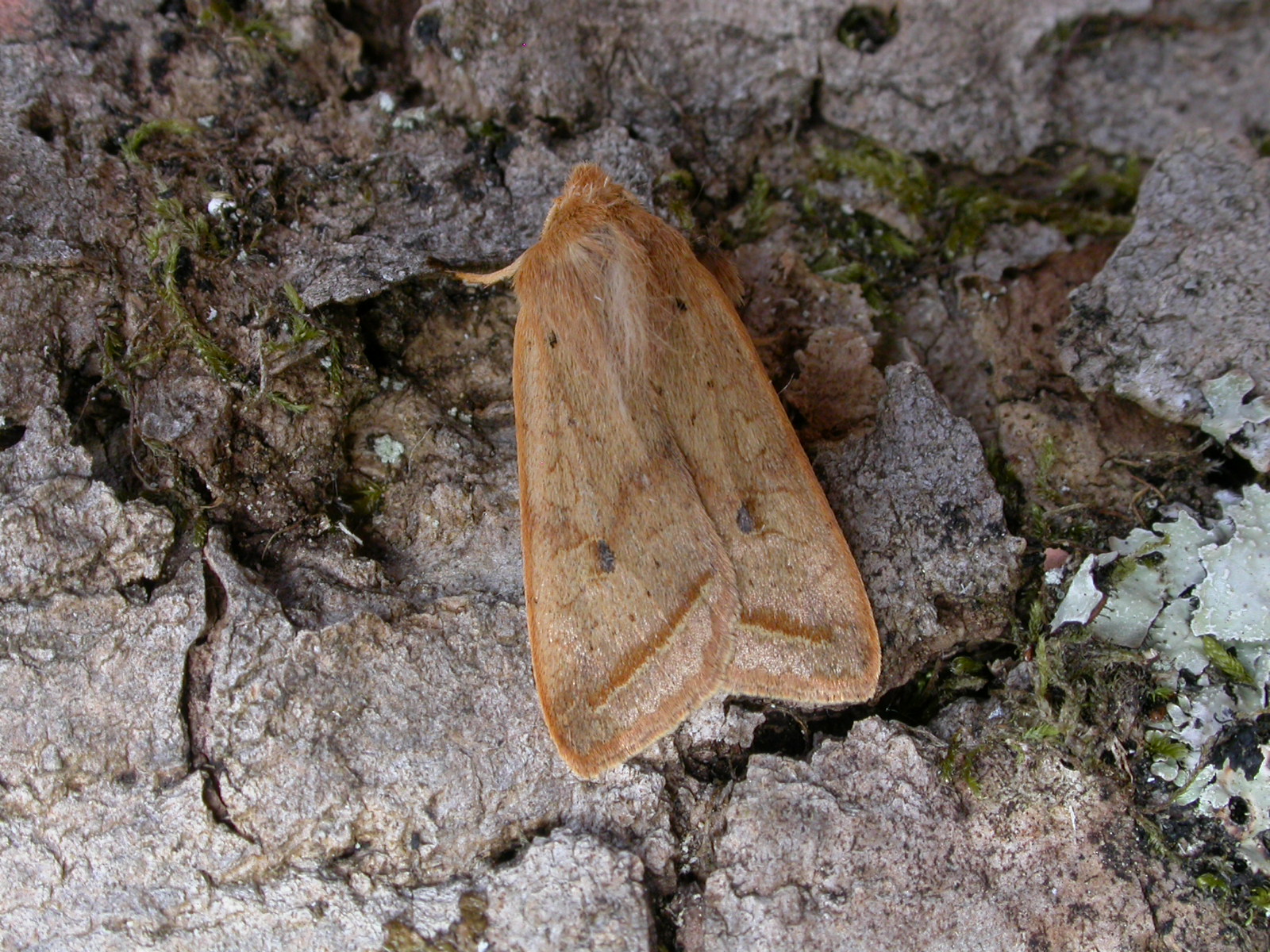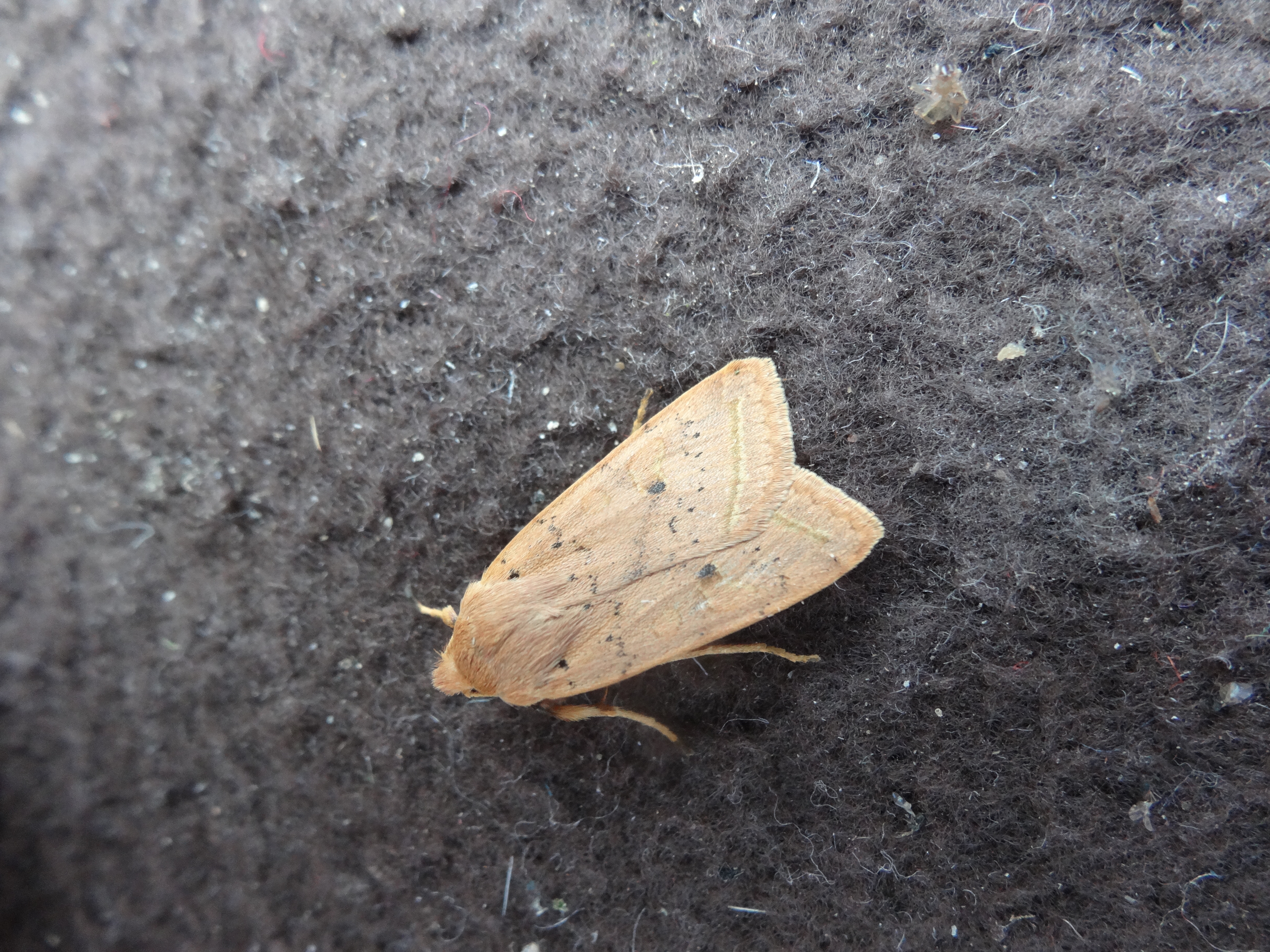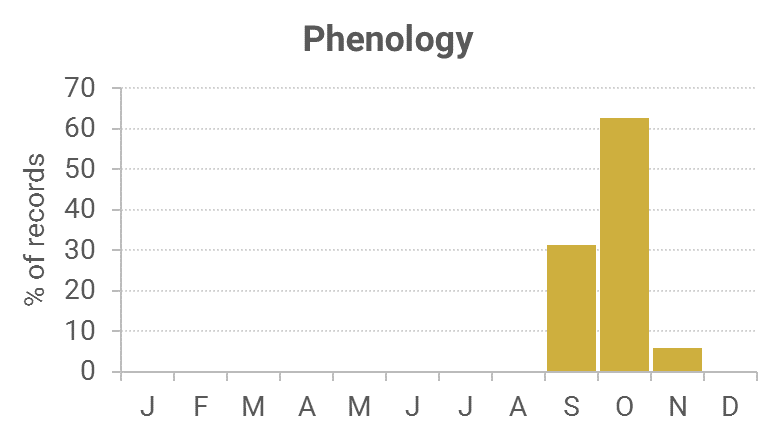Identification
The outermost cross-line which is reddish-brown edged with yellow, practically straight apart from a small kink near the costa on generally yellowish-brown forewings should aid identification.
Recording Method.
Attracted to light, also comes to sugar and flowers.
Life cycle
One generation. Overwinters as an egg. Larvae are present April to June, from there it constructs an underground cocoon for pupation several weeks later.
Larval foodplants
Beech, Hawthorn, oaks, poplars and sallows, also, heather on lowland heaths.
Habitat
Broadleaved woodland, hedgerows, heathland and moorland.
History
Lennon (1863) stated that it was uncommon, but that it had occurred near Terregles (VC73). Gordon (1913) had found it abundant in the autumn some years, but the ground colour was very variable. It also came to sugar in the woods at Corsemalzie, Wigtownshire.
Sir Arthur Duncan (1909-84) during his lifetime had found it at Closeburn, Tynron and Castlehill, Dumfries (all VC72). Archibald Russell (1944) listed it as occurring near Gatehouse of Fleet (VC73) during the years 1942-43.
During 1974-93 there were 200 records from six of the Rothamsted stations, Caerlaverock not recording it.
From 1992 to 2010 the regular trapped sites at Kirkton and Durisdeer (VC72), Cally Woods, Kirkcudbright, Carsluith and Old Torr (VC73) and Forest Moor (VC74) produced most of the remaining records, however, visiting moth-ers have found it at Sandgreen, New Abbey and Glenwhan Gardens at Dunragit.

